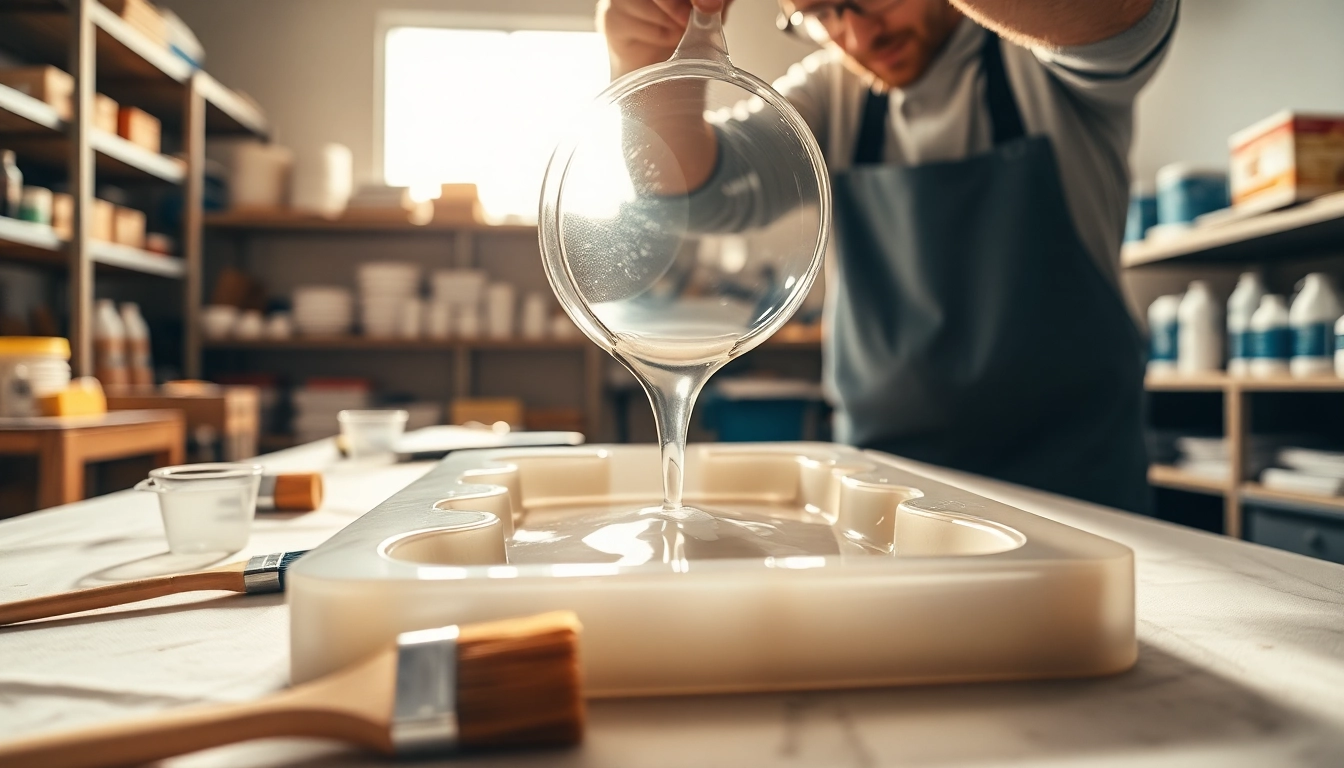Understanding Precision Die Cutting
In the realm of manufacturing and product design, the demand for precision and efficiency has never been higher. One standout technique that has gained prominence for its accuracy is precision die cutting. This process plays a critical role in producing finely molded components used across various industries. In this comprehensive guide, we delve into the intricate details of precision die cutting, including its definition, applications, benefits, techniques, material selection, quality control, and future trends.
What is Precision Die Cutting?
Precision die cutting is a manufacturing technique used to convert sheets or rolls of material into specific shapes and sizes with remarkable accuracy. Unlike standard die cutting, which may prioritize speed over precision, this technique focuses on achieving tight tolerances, ensuring parts meet exact specifications.
The process involves using specialized dies or tools designed to cut through various materials—such as paper, plastic, foam, and metals—effectively and efficiently. The precision achieved in this method allows for the creation of intricate designs and components that cater to a wide array of industrial requirements.
Applications of Precision Die Cutting
Precision die cutting serves multiple industries, reshaping the way products are manufactured. Key applications include:
- Automotive Industry: Creating gaskets, seals, and acoustic insulation materials that require exact dimensions and properties.
- Medical Devices: Precision components such as custom parts for syringes, bandages, and other medical apparatus that must adhere to stringent regulatory standards.
- Packaging: Designing custom packaging that optimally fits products while appealing aesthetically to consumers.
- Electronics: Manufacturing intricate parts for devices, including insulating layers and components for circuit boards.
- Construction and Tech: Producing insulation material and soundproofing elements tailored for specific applications.
Key Benefits of Using Precision Die Cutting
Choosing precision die cutting offers several key benefits:
- High Accuracy: The process delivers precise cuts with minimal material wastage, leading to cost-effective production.
- Versatility: Can be applied to a broad range of materials and various industry applications.
- Fast Turnaround: Despite its focus on precision, advanced die cutting technology allows for rapid production times.
- Customization: Easily adapts to design changes, making it suitable for custom projects and specialized orders.
- Improved Quality Control: The process ensures that finished products meet high standards in terms of dimensions and material properties.
Precision Die Cutting Techniques
Flatbed Die Cutting Explained
Flatbed die cutting is a technique where a flat die-mounted onto a hydraulic press cuts through material. This method is known for its ability to deliver robust cuts, making it suitable for thicker materials such as cardboard and foam. The die’s design allows for intricate cut patterns, and because the material remains flat during the process, it can accommodate larger sheets, making it ideal for high-volume production runs.
Rotary Die Cutting Advantages
Rotary die cutting utilizes a cylindrical die that rotates to cut materials, providing several distinct advantages:
- Efficiency: It allows continuous cutting as material feeds through the rotary die, which significantly speeds up production.
- Precision: The rotating action ensures that cuts are clean and maintain tight tolerances.
- Minimal Waste: The process is designed for high yield and less scrap material.
This technique is often employed in the printing and packaging industries, where quick output and accuracy are essential.
Laser Die Cutting Technologies
Laser die cutting incorporates advanced laser technology to achieve precise cuts without the need for physical dies. Key benefits of this technique include:
- High Precision: Laser cutting allows for intricate details and fine cuts that may not be possible with traditional die cutting methods.
- Flexibility: Quick adjustments can be made to designs without the need for new dies, thus speeding up the prototyping process.
- Less Material Damage: The focused laser beam results in less physical contact with the material, leading to a reduced risk of warping or bending.
- Minimal Setup Time: It requires less preparation time compared to traditional methods, allowing for quick changes in production lines.
Choosing the Right Materials for Precision Die Cutting
Common Materials Used
Various materials are suitable for precision die cutting, and selecting the right one for your project is key to achieving desired outcomes. Common materials include:
- Paper and Cardstock: Ideal for packaging, visual displays, and prototypes due to their ease of cutting and versatility.
- Plastics: Widely used in various industries for products requiring durability and flexibility, including polycarbonate and PVC.
- Foam: Used for insulation, padding, or decorative elements in electronics and furniture.
- Metal: Thin sheets of metal can be die cut for precision parts in automotive and aerospace applications.
Material Properties Impacting Die Cutting
The physical properties of materials can significantly impact the die cutting process. Factors to consider include:
- Thickness: Thicker materials may require more powerful machinery and specialized dies.
- Density: High-density materials may need specific cutting techniques to ensure clean cuts.
- Elasticity: Materials with high elasticity can pose difficulties in maintaining accurate dimensions post-cut.
- Coatings: Surface treatments or coatings can affect cutting precision. Compatibility with dies must be evaluated.
Best Practices for Material Selection
Choosing the right materials for precision die cutting involves several best practices:
- Consult Engineers: Collaborate with engineers and designers to determine material performance requirements.
- Sample Testing: Conduct tests with different materials to evaluate the cutting process and assess final product quality.
- Consider End-Use: Select materials based on their end-use applications and environmental factors they may encounter.
Quality Control in Precision Die Cutting
Maintaining Tolerances and Specifications
Achieving high precision in die cutting demands strict adherence to tolerances and specifications. To ensure quality:
- Understand Tolerance Levels: Establish clear tolerance levels (standard is +/- 0.005 to +/- 0.010 inches) depending on application requirements.
- Regular Calibration: Keep cutting machinery regularly calibrated to maintain accuracy in operations.
- Implement Feedback Loops: Use feedback from production runs to refine processes and correct variances promptly.
Testing and Inspection Methods
Post-production testing and inspection are crucial to validate that components meet specifications:
- Visual Inspections: Conduct visual checks for defects or imperfections in cut edges.
- Dimensional Measurement: Utilize tools such as calipers and micrometers to measure accuracy against specified dimensions.
- Functional Testing: Evaluate parts in actual working conditions to ensure they perform as intended under operational stresses.
Implementing Quality Assurance Protocols
A robust quality assurance protocol is imperative for consistent results. Essential steps include:
- Develop QA Checklists: Create checklists for each stage of production to enforce compliance with quality standards.
- Train Staff: Provide training for operational staff on quality control measures and protocols specific to die cutting.
- Conduct Internal Audits: Regularly conduct audits of processes to identify areas for improvement and ensure standards are upheld.
Future Trends in Precision Die Cutting
Innovations to Watch
The field of precision die cutting continues to evolve, driven by technological advancements. Trends to watch include:
- 3D Die Cutting: The emergence of 3D printing technology integrated with die cutting processes, allowing for more complex designs and shapes.
- Advanced Materials: The use of smart materials that respond to environmental changes, offering innovative solutions in product design.
- Artificial Intelligence: AI-driven systems that optimize die cutting processes through data analysis and predictive maintenance.
Environmentally Friendly Practices
As businesses become increasingly aware of environmental implications, sustainable practices in precision die cutting are prioritized:
- Recyclable Materials: Encouraging the use of materials that are easy to recycle post-production.
- Waste Minimization: Utilizing techniques that reduce scrap and enhance material utilization.
- Energy-Efficient Machines: Investing in energy-efficient die cutting equipment that reduces the carbon footprint during production.
The Role of Automation in Precision Die Cutting
Automation is shaping the future of precision die cutting by enhancing efficiency and reducing human error:
- Robotic Integration: The use of robotic systems to automate material handling and die cutting processes, improving speed and accuracy.
- Real-Time Monitoring: Incorporating IoT devices for real-time monitoring and processing analytics to streamline production workflows.
- Predictive Maintenance: Leveraging AI to forecast equipment maintenance needs, thereby minimizing downtime and maintaining consistent quality.


